Related compounds Boiling point 254 °C Density 1.06 g/cm³ Melting point -7.5 °C | Formula C10H12O2 Molar mass 164.2 g/mol IUPAC ID 4-Allyl-2-methoxyphenol | |
Eugenol /juːdʒɪnɒl/ is a phenylpropene, an allyl chain-substituted guaiacol. Eugenol is a member of the phenylpropanoids class of chemical compounds. It is a colourless to pale yellow oily liquid extracted from certain essential oils especially from clove oil, nutmeg, cinnamon, basil and bay leaf. It is present in concentrations of 80–90% in clove bud oil and at 82–88% in clove leaf oil.
Contents
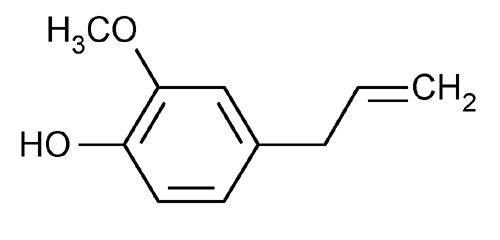
Modern uses
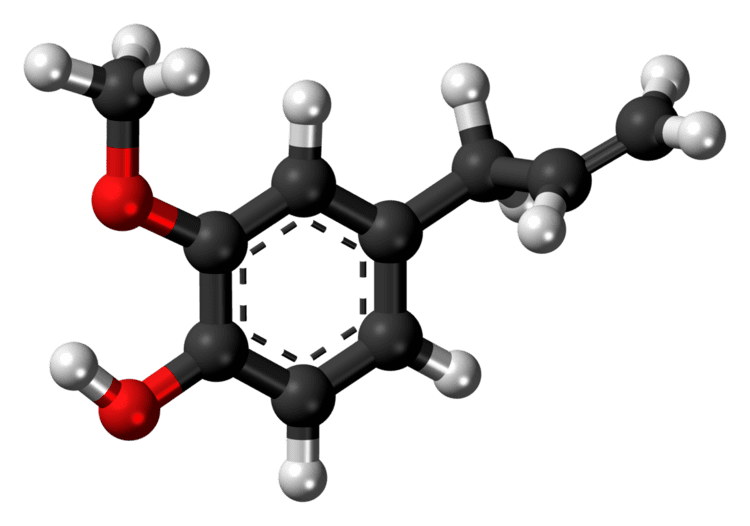
Eugenol is used in perfumes, flavorings, and essential oils. It is also used as a local antiseptic and anaesthetic. Eugenol can be combined with zinc oxide to form zinc oxide eugenol which has restorative and prosthodontic applications in dentistry. For example, zinc oxide eugenol is used for root canal sealing.

Attempts have been made to develop eugenol derivatives as intravenous anesthetics, as an alternative to propanidid which produces unacceptable side effects around the site of injection in many patients.
It can be used to reduce the presence of Listeria monocytogenes and Lactobacillus sakei in food.
It is also used in manufacturing stabilizers and antioxidants for plastics and rubbers.
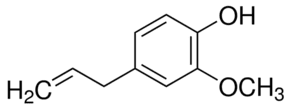
It is one of many compounds that is attractive to males of various species of orchid bees, which apparently gather the chemical to synthesize pheromones; it is commonly used as bait to attract and collect these bees for study. It also attracts female cucumber beetle. It was recently discovered that eugenol and isoeugenol, floral volatile scent compounds, are catalyzed by a single type of enzyme in the Gymnadenia species and gene encoding for this enzyme is the first functionally characterized gene in this species so far.
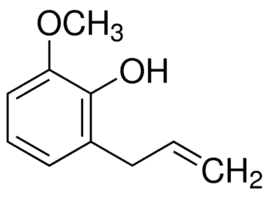
Clove oil is growing in popularity as an anaesthetic for use on aquarium fish as well as on wild fish when sampled for research and management purposes. Where readily available, it presents a humane method to euthanise sick and diseased fish either by direct over-dose or to induce sleep before an overdose of eugenol.
It is also used in some mousetraps.
Toxicity
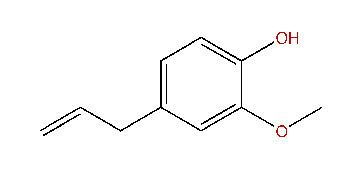
Eugenol is hepatotoxic, meaning it may cause damage to the liver. Overdose is possible, causing a wide range of symptoms from blood in the patient's urine, to convulsions, diarrhoea, nausea, unconsciousness, dizziness, or rapid heartbeat. According to a published 1993 report, a 2-year-old boy nearly died after taking between 5 and 10 ml In context, this would represent a toxic dose in the range of 500-1000mg/kg, approximately one third that of table salt.
Allergy
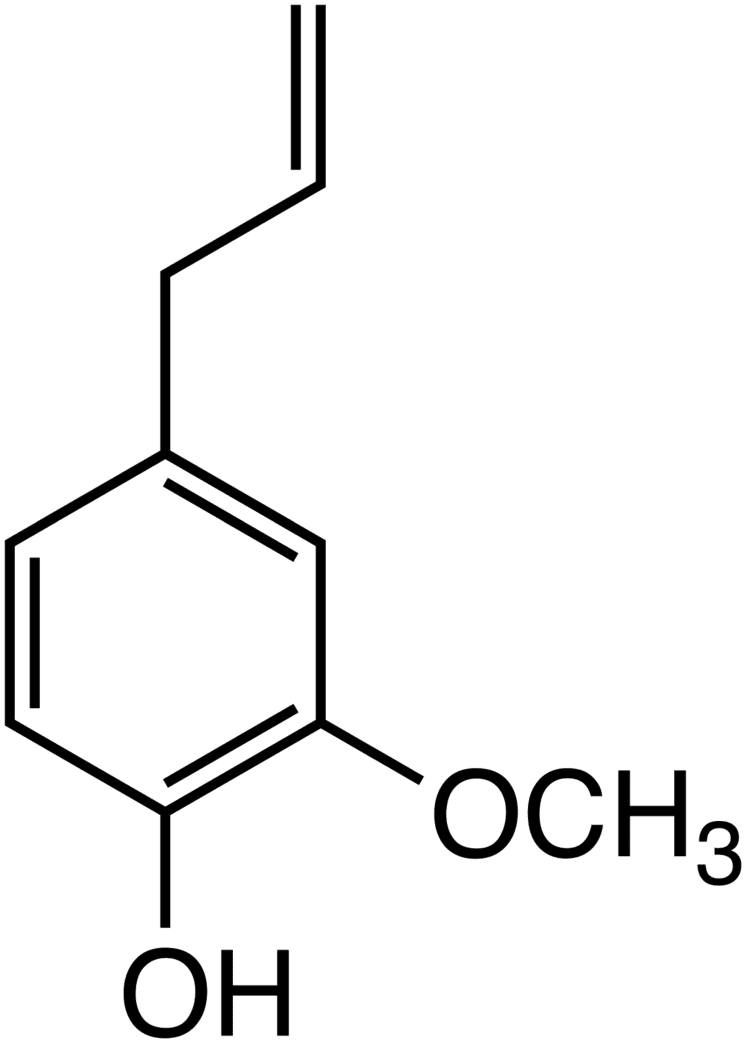
Eugenol is subject to restrictions on its use in perfumery as some people may become sensitised to it, however, the degree to which eugenol can cause an allergic reaction in humans is disputed.
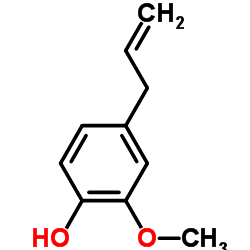
Eugenol is a component of Balsam of Peru, to which some people are allergic. When eugenol is used in dental preparations such as surgical pastes, dental packing, and dental cement, it may cause contact stomatitis and allergic cheilitis. The allergy can be discovered via a patch test.
Natural occurrence
Eugenol is naturally occurring in several plants, including the following:
